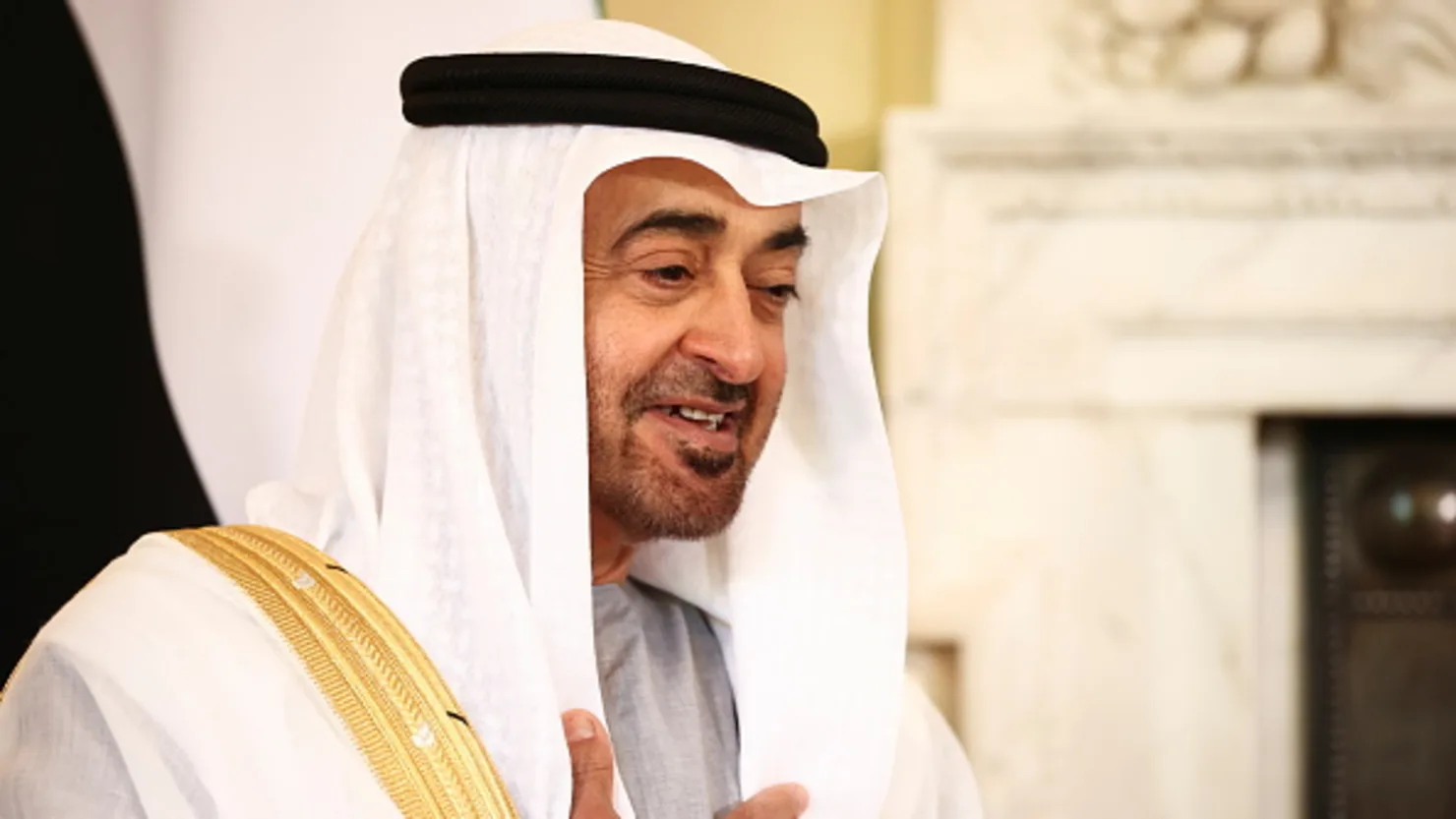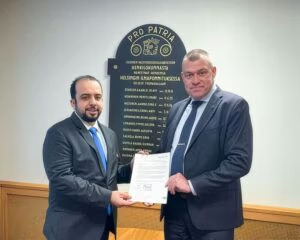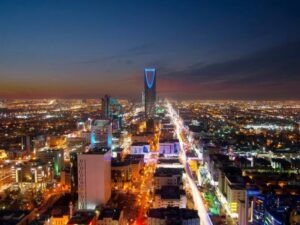UAE President Sheikh Mohammed bin Zayed Al Nahyan’s inaugural state visit to the United States marks a strategic shift in UAE-U.S. relations, with the focus moving beyond traditional defense and energy concerns toward a deeper collaboration in artificial intelligence (AI), investment, and innovation.
Ahead of Sheikh Mohammed’s meeting with U.S. President Joe Biden and Vice President Kamala Harris in Washington, D.C., key Emirati officials emphasized that this visit would aim to usher in a “geo-economic phase” of the partnership. The agenda will prioritize economic growth and technological innovation as the pillars of this new chapter in bilateral relations.
“The purpose of the visit is really from an Emirati perspective, it’s investing in our future … through an economic lens,” said Anwar Gargash, Sheikh Mohammed’s most senior diplomatic advisor, during a media briefing in Dubai on Thursday. While regional security issues, including the conflict in Gaza, will feature in discussions, Gargash stressed that economic realignment is the primary goal. “We are more in a geo-economic phase,” he added.
The UAE is looking to deepen its relationship with the U.S. through key sectors like artificial intelligence, renewable energy, space exploration, and climate initiatives, while continuing to expand its role as a global leader in advanced technology.
AI and Technology at the Forefront
The UAE’s commitment to technological advancement is evident in its growing partnerships with U.S. tech companies. In April, Microsoft made a $1.5 billion investment in G42, the UAE’s leading artificial intelligence company. This came after OpenAI CEO Sam Altman described the UAE as a potential “regulatory sandbox” for testing AI applications earlier in the year.
Highlighting the importance of technology in the UAE’s future, Yousef al-Otaiba, the Emirati ambassador to Washington, noted, “Few countries are moving as fast on advanced technologies and artificial intelligence — and as closely in sync with the U.S. — as the UAE.” This strategic collaboration, he added, underscores the Emirates’ ambition to not only adopt cutting-edge technologies but also shape global standards for AI regulation.
The visit will also include discussions with U.S. business leaders and tech executives, reinforcing the UAE’s aim of attracting American investment in AI and other high-tech sectors, while balancing its diplomatic and investment relationships with China.
Growing Investment Ties and Strategic Goals
The U.S. and UAE have maintained strong trade and investment partnerships for over five decades. In 2023, bilateral trade between the two nations was valued at approximately $31.4 billion, with U.S. exports to the UAE accounting for $24.8 billion, according to the UAE Embassy in Washington, D.C.
The UAE’s sovereign wealth funds, including the Abu Dhabi Investment Authority and Mubadala, have made significant investments in U.S. real estate, infrastructure, and technology sectors, contributing to an investment portfolio exceeding $1 trillion. The Emirates’ ability to diversify its economic strategy has enabled it to remain a crucial player in U.S. markets, despite challenges like the Biden administration’s recent chip curbs aimed at limiting U.S. technology transfers to China.
“The relationship between the U.S. and the UAE is expanding beyond traditional sectors,” Gargash said. “We see that we are laying a map for what we are thinking in the next 20 years. Our ties now reflect a 360-degree relationship.”
The UAE has also remained a key strategic defense partner to Washington. It hosts the U.S. airbase at Al Dhafra and has played a significant role in U.S.-led military efforts in Afghanistan, Iraq, and the fight against ISIS. Additionally, the UAE has been an active participant in operations against al-Qaeda in the region, further solidifying its reputation as a trusted ally in matters of security and counter-terrorism.
Regional Challenges and Humanitarian Issues
While the focus of Sheikh Mohammed’s visit will primarily be on economic growth, regional instability — particularly the ongoing conflict in Gaza — remains an unavoidable topic. The humanitarian crisis in Gaza has intensified, with Israeli strikes on Hezbollah targets in Lebanon and heightened tensions due to Iran’s involvement in arming the Houthi rebels in Yemen.
The complex dynamics of the region add another layer of urgency to discussions between the two leaders. Gargash emphasized the need to balance the economic realignment with the UAE’s longstanding commitments to peace and stability in the Middle East.
The visit also comes at a politically significant moment for the U.S., as the American election looms in November. The anniversary of the Oct. 7 attacks on Israel adds further strain to an already volatile region, presenting a challenging backdrop to Sheikh Mohammed’s economic and diplomatic outreach.
A New Chapter in UAE-U.S. Relations
As the UAE navigates its evolving relationship with the U.S., the visit to Washington marks a pivotal moment in redefining the partnership. The shift from a defense- and oil-centered relationship to one focused on AI, technology, and innovation aligns with the UAE’s long-term vision of economic diversification and global leadership in advanced technologies.
The UAE’s ongoing investments in the U.S. and its deepening ties with American tech companies signal its readiness to embrace the future, leveraging cutting-edge technologies to drive growth while remaining a key player on the global stage.
By focusing on AI, renewable energy, and economic realignment, Sheikh Mohammed’s visit highlights the UAE’s strategic move toward a “geo-economic phase” that will further solidify its position as a leading partner for the U.S. in the years to come.




